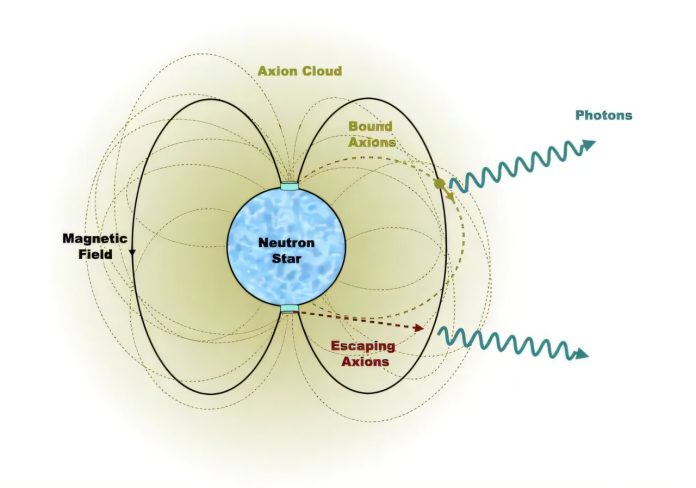
A team of physicists from the universities of Amsterdam, Princeton, and Oxford has made an exciting discovery that could help explain one of the biggest mysteries in the universe—dark matter.
Their research suggests that a type of invisible particle called axions may exist in large clouds around neutron stars.
Axions are thought to be extremely light particles that could be responsible for dark matter, which makes up about 85% of the universe but is difficult to detect.
The research, published in Physical Review X, builds on the team’s earlier work. Previously, they focused on axions that escape from neutron stars.
This time, they are investigating the axions that stay behind, forming clouds around the stars.
These clouds could be detectable with telescopes, which could help scientists learn more about axions and dark matter.
What are axions?
We are familiar with particles like protons, neutrons, and electrons, but axions are much lesser known.
First proposed in the 1970s, axions were suggested to solve a problem with how neutrons behave.
The name “axion” actually comes from a brand of soap, as these particles were thought to “clean up” a puzzle in physics.
Axions are very light and hard to detect. However, physicists believe they could be part of the solution to the dark matter mystery.
Dark matter is called “dark” because we can’t see it directly. We know it exists because of the way it affects gravity, but we still don’t know what it’s made of. Axions, being hard to detect but still interacting with gravity, might be a key piece of the puzzle.
Why neutron stars?
Neutron stars are some of the densest objects in the universe.
They are the remains of stars that have exploded, leaving behind a core packed with mass similar to our sun but squished into a size of just 12 to 15 kilometers.
These stars have extremely strong magnetic fields, which could help axions turn into light, making them easier to detect.
The idea is that the axions near neutron stars would create clouds that can stay around for millions of years.
These axion clouds would be much denser than other places where dark matter is found. The research suggests that these clouds could eventually be detected with telescopes, either through a continuous signal or a burst of light when the neutron star dies.
How can we detect axions?
Axions can potentially convert into light when exposed to strong magnetic fields, and neutron stars provide the perfect environment for this. The research team believes that axion clouds could be generic—meaning they could form around most neutron stars—and might be dense enough to create detectable signals.
In their study, the researchers explored how these axion clouds form, grow, and evolve. They also discussed how the signals from these clouds might appear to astronomers. For example, the clouds could produce a steady signal throughout much of the neutron star’s life, or a bright burst of light at the end of its life.
So far, axion clouds haven’t been observed, but now scientists know what to look for. The next step is to search for these clouds using radio telescopes. The researchers are also working on follow-up studies, including how axion clouds might change the behavior of neutron stars themselves. Additionally, more computer modeling is needed to better understand what these axion clouds look like.
This discovery is an important step toward solving the dark matter mystery. It could open up new research in multiple areas of science, including particle physics, plasma physics, and astronomy.



